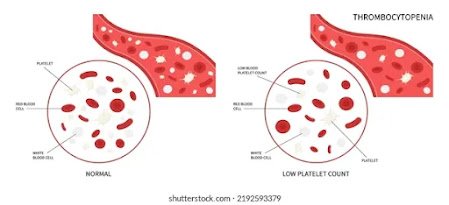IS ALMOND MILK BAD FOR ENVIRONMENT?
Over the past ten or so years, almond milk has grown in popularity. An increasing number of Americans are enjoying it straight from the carton or in recipes.
However, a lot of customers are curious if almond milk is harmful to the environment. It originates from thirsty trees, some of which were grown during California’s protracted drought. Here, we compare the amount of water used in the production of almond milk to that of dairy and other plant-based alternatives.
Describe Almond Milk.
Almond milk is a beverage prepared by blending and straining almonds along with water and, depending on the type of milk, a few other possible flavoring additives like sugar or vanilla.
Although the dairy industry opposes the sale of plant-based products labeled as “milk,” the term “milk” has always been associated with the resulting beverage. Not only has almond milk been mentioned in recipes going back at least to the 13th century, but plant-based milks are also included in the definition of the Oxford English Dictionary. Almond milk is, according to a recent FDA ruling, a milk.
Is Environmental Damage Caused by Almond Milk?
In general, almond milk poses less of a threat to the environment than cow’s milk. However, there are a few things that buyers need to be aware of.
What Are Almond Milk’s Environmental Drawbacks?
1. Use of Water
The amount of water used in almond production is among its worst features. Almonds require approximately 371 liters of fresh water per liter of milk, making them thirstier than other plants. That is still far less than dairy milk, but it is more than soy milk, oat milk, and even rice milk.
Unfortunately, California, which is particularly prone to drought, produces around 80% of the almonds planted worldwide. Although almond farming uses less water than dairy, it nevertheless contributes to the state’s droughts. Farmers in California are also switching to more water-efficient irrigation methods, which conserve water in comparison to methods from ten or twenty years ago.
2. Use of Pesticides
With more than 34 million pounds of active chemicals sprayed on almond trees in the United States in 2017—more than most other crops—almonds have a significant pesticide problem. An increase in pesticide use may be detrimental to local wildlife populations, particularly insects, as well as
3. Effect on Honeybees
In particular, bees may be negatively impacted by all of these chemicals. Because of the potential harm that pesticides can cause to their bee colonies, some honeybee farmers think twice before planting almond trees.
Still, there’s space for development. In an effort to support nearby bees and pollinators, many almond tree groves are attempting to increase biodiversity by incorporating other types of plants.
Almond milk is less harmful to the environment than cow’s milk in practically every way. Actually, all plant-based milk varieties are more environmentally friendly than cow’s milk.
Use of Land
Almond milk uses half a square meter of land per liter, compared to 8.95 square meters for dairy milk. Because animals require a lot of feed, animal agriculture is intrinsically inefficient in its use of land; just the cattle industry accounts for 41% of global deforestation. The dairy industry is not an exception to this pattern.
Almond milk generates 0.7 kg of greenhouse emissions per liter, more than four times less than dairy milk’s 3.15 kg. As ruminant animals, cows release a significant amount of methane when housed in the large quantities needed for the dairy and beef sectors.
Dairy milk uses less water than almond milk, even though almond milk gets a lot of flak for it. Almond milk uses 371 liters of fresh water per liter, which is still high but not quite as much as 628 liters for dairy milk.
The largest water-guzzlers in the American West are feed crops, such as alfalfa and corn, which are fed to livestock like dairy cows. During a drought, the demands of animal husbandry on the water supply are enormous. Even if they exacerbate the issue, almonds still pose less of a threat than dairy, but more so than other plant-based milk alternatives.
Additionally, the surplus nutrients that dairy milk washes into streams with the potential to harm aquatic life contributes to pollution. A large amount of pesticides are used in animal agriculture in order to develop feed crops.
Aisles full of milk options, ranging from different plant-based milks to cow’s milk, can be found in most supermarkets in the United States. Every one has a varied need for the use of water and land, and produces a different amount of emissions.
- The manufacturing of oat milk uses, per liter
- 48.24 liters of water on 0.76 square meters of land
- 0.9 kg of emissions of greenhouse gases
The bottom line is that oat milk is far less bad for the environment than almond or dairy milk.
The manufacturing of soy milk uses, per liter:
- 0.66 square meters of terrain
- 27.8 water liters
- 0.98 kg of emissions of greenhouse gases
Conclusion: Fortified soy milk provides the same nutrients as dairy milk, which is also fortified, and is among the best milks in terms of environmental effect.
Because cashew milk is not as popular as other plant-based milks, experts have not yet thoroughly examined its life cycle assessments. Nonetheless, cashew production itself employs:
6,450 water gallons for every pound
7.6 grams per kilogram of greenhouse gas emissions
Assuming the amount of cashews used in many recipes found online, 130 grams per liter of milk comes to approximately:
131.9 water liters
A quantity of 0.988 kg of carbon dioxide
Sometimes, subpar labor techniques are used to make cashew milk. Furthermore, since cashews are a climate-specific crop, their overall carbon emissions are increased by transportation (though the production of food always contributes more to emissions than transportation).
The manufacturing of coconut milk uses, per kilogram:
6.81 water liters
Emissions of greenhouse gases of 0.1 kg
There are occasions when the manufacturing of coconut milk is connected to deforestation in Southeast Asian nations. Additionally, because picking coconuts is a physically demanding task, workers’ rights are occasionally violated. It’s crucial to purchase fair trade or locally grown coconuts because of this.
Conclusion: Read origin labels carefully because coconut milk has been connected to deforestation.
It’s challenging to choose a single milk that is the greenest, but soy and oat milks are almost completely free of emissions, water pollution, and land use. It is also evident that dairy milk is the worst option; it is more harmful than plant-based milks in almost every manner.
Fortunately, choosing a sustainable option can also mean choosing health, especially if you choose for something like soy that is fortified and unsweetened. If you decide to consume almond milk, be sure it was made with as little pesticide as possible by looking for the Bee Better seal. The main conclusion is that plant-based milks are obviously healthier for the environment and can also be a component of a balanced diet.













